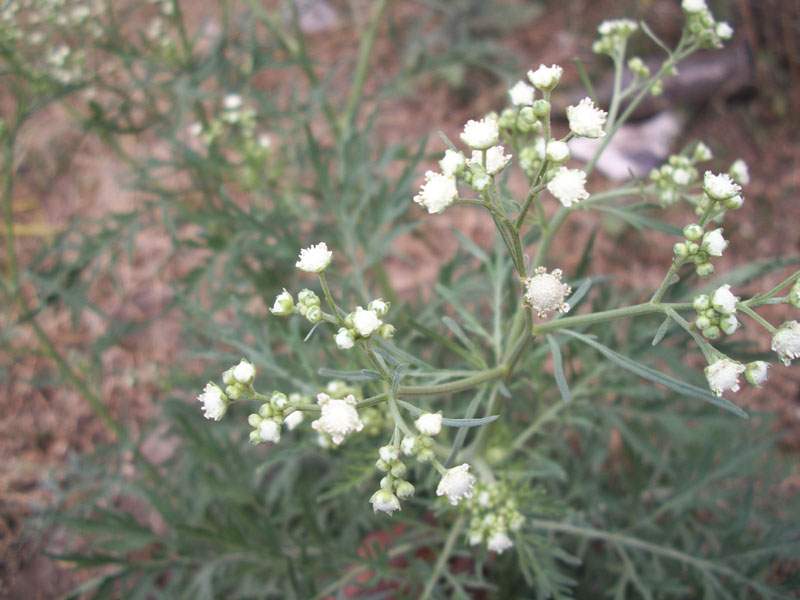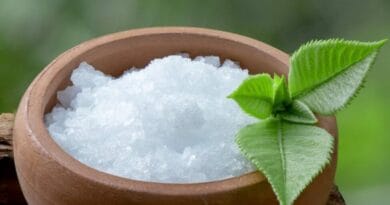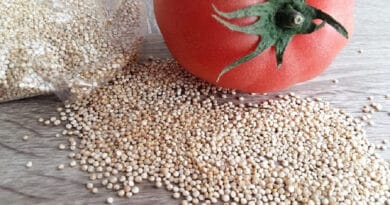Use of Carrot grass (Parthenium hysterophorousL.) for making organic manure
Farmers can boost their fields’ production by the Use of Carrot grass as an organic manure;
Unwanted plants or weeds that grow without sowing always hurt the yield and quality of the crop. Carrot grass is also a dangerous weed, which has a terrible effect on crops and human health. Its scientific name is Parthenium hysterophorus. It is a member of the Asteraceae family.
Carrot grass is also known by the names Congress grass, bitter grass, Chatak Chandni, etc. This weed came to India in 1955 with wheat imported from America and Canada. Now, it has spread over lakhs of hectares of non-cultivated and agricultural land, and day by day, it has become a threat not only to farmers but also to humans, the environment, and biodiversity.
Scientists are currently utilizing it as fertilizer to avoid this weed. The purpose of this is to produce fertilizers. By producing fertilizers, farmers can both improve the fertility of the land and protect themselves against weeds harming their crops.
Identification of Carrot Grass;

It is a plant with a tropical climate, often seen on the roadside or in dirty places. Its length is about 90 cm to 1 meter. It grows throughout the year in all types of soil and germinates at a temperature of 25 to 30 degrees Celsius.
Make fertilizer from carrot grass.
Excessive usage of chemical fertilizers has detrimental consequences on both human health and the environment because of the intensive farming system. The land’s fertility is steadily decreasing. The ecology and human health are suffering greatly as a result of the use of chemical fertilizers.
Considering the harmful effects of chemical fertilizers on the environment and humans, the importance of organic fertilizers is increasing day by day in India. We can both save the environment and make money by recycling carrot grass into organic fertilizer. On the one hand, we preserve the crops by weeding the fields of carrot grass and other weeds; on the other hand, we can use scientific ways to extract high-quality organic fertilizer from all of these weeds. Farmers can boost their fields’ production by incorporating this into their crops.
Why are farmers afraid of making fertilizer from carrot grass?
Some time ago, a survey found that farmers are afraid of making fertilizer from carrot grass because they fear that if they use carrot grass fertilizer, there will be more carrot grass in the fields.
This misconception arose as a result of some farmers’ use of improper methods to make fertilizer from carrot grass. According to the survey, when some farmers produced fertilizer from carrot grass with flowers using the Nadep method, more carrot grass grew in their fields. Similarly, in villages, the fertilizer is produced from cow dung in open pits or pits.
When the carrot grass with flowers was put in open pits with cow dung, even after using this manure, the carrot grass infestation increased in the fields. In research conducted in a directorate, it was found that when the carrot grass with flowers was made into manure in open pits or pits, its tiny seeds were produced and they were not destroyed. In a study, it was found that up to 500 carrot grass plants were found in only 300 grams of manure. Due to these reasons, Indian farmers are afraid to make manure from carrot grass. If farmers make carrot grass manure scientifically, it will be a safe manure.
Method of making organic manure from carrot grass.
Due to the lack of dormancy in carrot grass seeds, which are insensitive to cold and heat, carrot grass plants with and without flowers can be seen in the fields simultaneously. As a result, weeding inevitably leads to the identification of flowering plants. Nonetheless, to use carrot grass in manure, farmers should make every effort to uproot it when the number of blossoms is minimal. The younger the carrot grass is taken out, the more beneficial the manure.
1. Prepare a 3x6x10-foot (depth x width x length) pit at a good location with a low elevation on the field or land where there is no water accumulation. The pit’s depth should not be less than three feet, but you can reduce its length and width to fit your needs and the amount of carrot grass on the field.
2. If possible, place stone pieces on the surface of the pit and on the side walls in such a way that the pit of raw soil becomes a solid tank. The advantage of this will be that the soil of the pit will not be able to absorb the nutrients of the compost.
3. If stones cannot be arranged, then level the surface of the floor and walls of the pit by beating it well with a mallet.
4. Uproot the carrot grass along with its roots from the ridges between the crops of your field and from the surrounding areas, and collect it near the pit.
5. Arrange 75 to 100 kg of raw cow dung, 5-10 kg of urea, or a bag of rock phosphorus (one or two quintals) and a water drum near the pit.
6. Spread about 50 kg of carrot grass on the surface of the entire length and width of the pit.
7. Mix 5-7 kg of cow dung in 20 liters of water and spray it on the layer of carrot grass.
8. Spray 500 grams of urea or 3 kg of rock phosphate on it. If the manure is to be used in organic farming, do not add urea.
9. If available, add 50 grams of culture powder of fungi called Trichoderma viridi or Trichoderma harzania per layer. By adding this fungal culture, the decomposition of large plants of carrot grass also happens quickly, and manure is prepared quickly. Since it is difficult to get this culture in remote villages, the use of this factor depends on its availability. In this way, mix all these ingredients and make a layer.
10. In the same way, keep making second, third, and other layers on top of one layer until the pit is one foot above the upper surface. While digging the carrot grass, keep pressing it well with your feet.
11. Here, instructions have been given to make a layer by uprooting the carrot grass from its roots. While uprooting, a lot of soil comes with the roots. Hence, the option of putting loose soil on top of the layer is open. If you feel that there is not much soil in the roots, then 11-12 kg of loose soil should be put in at the rate of per layer.
12. Now close the pit filled in this way properly with a paste of a mixture of cow dung, soil, straw, etc. On opening the pit after 5-6 months, good manure is obtained.
13. 37 to 42 quintals of freshly uprooted carrot grass come in the above-mentioned pit, which gives 73 to 45 percent. Compost is obtained.
Sieving of Carrot Grass Manure:
Even after 5 to 6 months, when you take out the manure from the pit, you may feel that the carrot grass with thick stems has not decayed properly. But in reality, it has decayed. Take this manure out of the pit and spread it in a shady place, and dry it. It becomes moist as soon as it comes into the air, and wet manure starts drying quickly. After it dries a little, remove it.
If you still find stems of carrot grass with fibers, then beat the heap with a stick or a mallet. Farmers who have bulls or tractors should run them on the heap for some time. By doing this, the stems of carrot grass with thick fibers will break and become fine, due to which more manure will be obtained. This manure should be sieved through a mesh having 2-2 cm holes. The waste of stumps left on the mesh should be separated.
The manure made by the farmer for his own use can also be used without sieving. Dry the compost obtained in the shade and pack it in plastic, jute, or other types of big or small bags. If a person or farmer wants to make carrot grass compost commercially, then they can make packets of 1, 2, 3, 4, 5 kg for use in kitchen gardens and big packets of 25 to 50 kg for use in commercial vegetable crops or gardening.
Nutrient content in carrot grass compost.
So far, in comparative studies, it has been found that the amount of main nutrients in compost made from carrot grass is twice that of cow dung and almost equal to earthworm compost. Therefore, making compost from carrot grass is a good and beneficial option.
| Type of organic Manure | Nutrient in Percentage | ||||||
| N | P | K | Ca | Mg | |||
| Caroot Grass Manure | 1.05 | 10.54 | 1.11 | 0.9 | 0.55 | ||
| Vermicompost Manure | 1.61 | 0.68 | 1.31 | 0.65 | 0.43 | ||
| Cow Dung Manure | 0.45 | 0.3 | 0.54 | 0.59 | 0.28 | ||
Precautions while making Carrot Grass:
While preparing compost from carrot grass, special attention should be paid to the following points……..
A) Make the pit in a shady, high, and open place with proper arrangement of air and water.
B) Carrot grass should be uprooted before flowering. At that time, there are more leaves, and the stems have less fiber. Hence, the compost yield is higher, and compost is prepared quickly.
C) Close the pit properly with a coating of a mixture of soil, cow dung, and straw. If it is not closed properly, the carrot grass seeds in the upper layers will not die. Usually, near the pit where carrot grass is collected for making compost, carrot grass germinates within 20-25 days. This happens due to the ripe seeds falling from the flowers of carrot grass. If you have used carrot grass with more flowers in making compost, then in that proportion, more germination of carrot grass will be found there. These newly sprouted carrot grasses must be uprooted from the root before flowering; otherwise, the microscopic seeds of these plants will infect your compost.
D) After one month, keep sprinkling water on the pit as per the need. If it feels too dry, make a hole in the upper layer with the help of a crowbar, etc., and pour water inside. After pouring water, the holes should be closed.
Benefits of carrot grass manure:
A) Carrot grass manure is such an organic manure whose use does not have any effect on crops, humans, and animals.
B) On making manure, the toxic chemical “Parthenin” found in the living state of carrot grass gets completely disintegrated.
C) Carrot grass manure is a balanced manure, in which the amount of nitrogen, phosphorus, and potash is more than cow dung manure. Apart from these main nutrients, carrot grass manure also contains micronutrients.
D) Being an organic manure, it is environmentally friendly.
E) It increases the fertility of the land at a very low cost
Read Further;
How to Make Beejamrit: A Natural Remedy for Sustainable Farming
How to Make Jeevamrit: A Natural Remedy for Sustainable Farming



